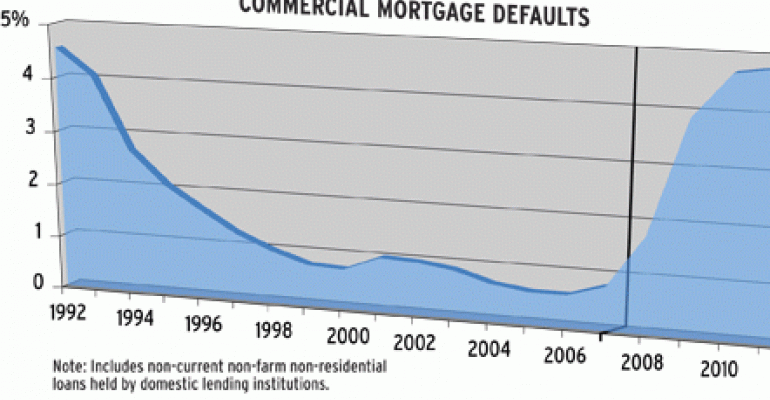Sam Chandan, formerly the chief economist at Reis Inc., has launched a new research venture -- Real Estate Economics to analyze the economy, monetary and fiscal policy developments, the regulatory environment and commercial real estate debt market conditions. Last week, the group released its first report, which examines the national default rate for commercial real estate mortgages and offers projections for default rates through 2012.
From an estimate of 1.8 percent for the fourth quarter 2008, the default rate for commercial real estate loans held by depository institutions is projected to reach 3.9 percent at the end of 2009; 4.7 percent at the end of 2010; and a peak of 4.8 percent in 2011. From its peak, the default rate is projected to decline to 4.2 percent over the course of 2012.
According to the report, key factors driving the projected increase in the default rate include:
- Constraints on the sources of credit for refinancing maturing mortgages and in support of new sale transactions;
- Further tightening of credit standards by those lenders that remain active in the commercial real estate sector;
- Declining commercial real estate property values; and,
- Deterioration in property income and escrow balances available to support principal and interest obligations during the term of loans.
The projections don’t take into account any positive movement that would result from the stimulus package currently working its way through Congress or the inclusion of commercial real estate debt into current Treasury Department and Federal Reserve facilities—something commercial real estate trade groups have recently been pushing for. If these things pass, Chandan writes that the default rate projections “could be revised significantly.”
(Full disclosure: Retail Traffic Editor-in-Chief David Bodamer is on the Real Estate Economics Board of Advisors.)


